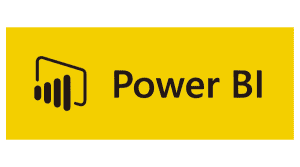Power BI is the collective name for an assortment of cloud-based apps and services that help organizations collate, manage, and analyze data from a variety of sources, through a user-friendly interface.
Business intelligence tools like Power BI can be used for a multitude of purposes.
Primarily, Power BI pulls data together and processes it, turning it into intelligible insights, often using visually compelling and easy-to-process charts and graphs. This allows users to generate and share clear and useful snapshots of what’s happening in their business.
Power BI connects to a range of data sources, from basic Excel spreadsheets to databases, and both cloud-based and on-premise apps.
Microsoft Power BI is used to run reports and surface insights based on a company’s data. Power BI can connect to a wide range of data sets, and “tidies up” the info it’s fed so that it can be better digested and understood. The reports and visuals generated from this data can then be shared with other users.
Power BI helps users see not only what’s happened in the past and what’s happening in the present, but also what might happen in the future. Power BI is infused with machine learning capabilities, meaning it can spot patterns in data and use those patterns to make informed predictions and run “what if” scenarios. These estimates allow users to generate forecasts, and prepare themselves to meet future demand and other key metrics.

